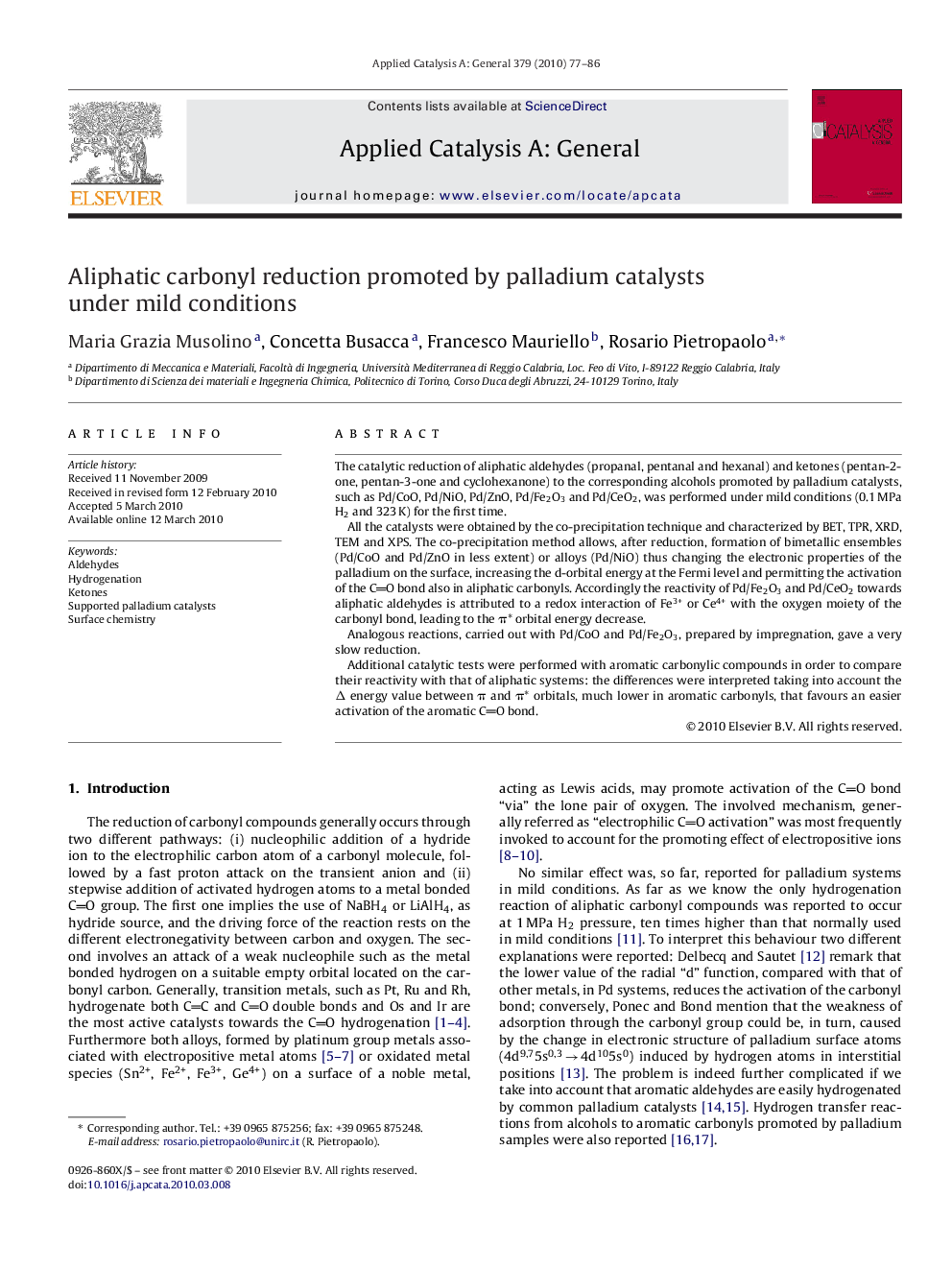| کد مقاله | کد نشریه | سال انتشار | مقاله انگلیسی | نسخه تمام متن |
|---|---|---|---|---|
| 42171 | 45913 | 2010 | 10 صفحه PDF | دانلود رایگان |

The catalytic reduction of aliphatic aldehydes (propanal, pentanal and hexanal) and ketones (pentan-2-one, pentan-3-one and cyclohexanone) to the corresponding alcohols promoted by palladium catalysts, such as Pd/CoO, Pd/NiO, Pd/ZnO, Pd/Fe2O3 and Pd/CeO2, was performed under mild conditions (0.1 MPa H2 and 323 K) for the first time.All the catalysts were obtained by the co-precipitation technique and characterized by BET, TPR, XRD, TEM and XPS. The co-precipitation method allows, after reduction, formation of bimetallic ensembles (Pd/CoO and Pd/ZnO in less extent) or alloys (Pd/NiO) thus changing the electronic properties of the palladium on the surface, increasing the d-orbital energy at the Fermi level and permitting the activation of the CO bond also in aliphatic carbonyls. Accordingly the reactivity of Pd/Fe2O3 and Pd/CeO2 towards aliphatic aldehydes is attributed to a redox interaction of Fe3+ or Ce4+ with the oxygen moiety of the carbonyl bond, leading to the π* orbital energy decrease.Analogous reactions, carried out with Pd/CoO and Pd/Fe2O3, prepared by impregnation, gave a very slow reduction.Additional catalytic tests were performed with aromatic carbonylic compounds in order to compare their reactivity with that of aliphatic systems: the differences were interpreted taking into account the Δ energy value between π and π* orbitals, much lower in aromatic carbonyls, that favours an easier activation of the aromatic CO bond.
The hydrogenation of aliphatic aldehydes and ketones promoted by supported palladium catalysts, prepared by co-precipitation, is performed under mild conditions (0.1 MPa H2 and 323 K) for the first time. Formation of bimetallic ensembles (Pd/CoO and Pd/ZnO in less extent) or alloys (Pd/NiO) changes the electronic properties of palladium on the surface, increasing the d-orbital energy at the Fermi level and allowing the activation of the CO bond. Accordingly the reactivity of Pd/Fe2O3 and Pd/CeO2 is attributed to a redox interaction of Fe3+ or Ce4+ with the oxygen moiety of the carbonyl bond.Figure optionsDownload high-quality image (90 K)Download as PowerPoint slide
Journal: Applied Catalysis A: General - Volume 379, Issues 1–2, 15 May 2010, Pages 77–86